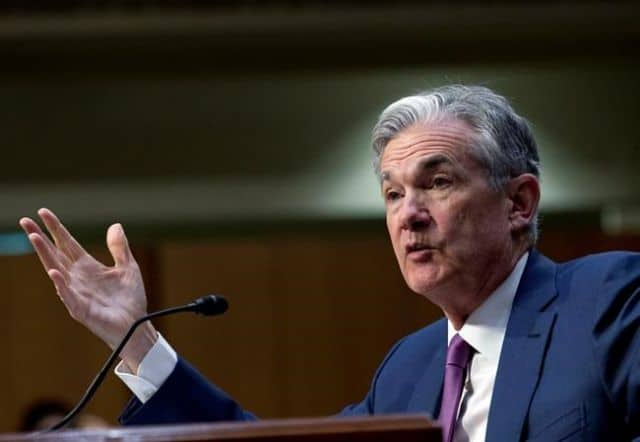The Federal Reserve is set this week to raise interest rates for a third time this year to prevent the economy from growing too fast. But with President Donald Trump’s trade fights posing a risk to the U.S. economy, the Fed may soon be ready to slow its hikes.
Many analysts expect the economy to weaken next year, in part from the effects of the conflicts Trump has pursued with China, Canada, Europe and other trading partners. The tariffs and counter-tariffs that have been imposed on imports and exports is having the effect of raising prices for key goods and supplies and potentially slowing growth.
An economic slowdown would likely lead the Fed to throttle back on its rate increases to avoid stifling growth. In that scenario, it might raise rates only twice in 2019 and then retreat to the sidelines to see how the economy fares.
Compounding the effects of the tariffs and retaliatory tariffs resulting from Trump’s trade war, other factors could slow growth next year. The benefits of tax cuts that took effect this year, along with increased government spending, for example, are widely expected to fade.
Still, some analysts hold to a more optimistic scenario: That momentum already built up from the government’s economic stimulus will keep strengthening the job market and lowering unemployment — at 3.9 per cent, already near a 50-year low. A tight employment market, in this scenario, will accelerate wages and inflation and prod the Fed to keep tightening credit to ensure that the economy doesn’t overheat.
Any light the Fed might shed on those questions could come in the statement it will make after its latest policy meeting ends Wednesday, in updated economic and rate forecasts it will issue or in a news conference that Chairman Jerome Powell will hold afterward.
The modest rate increase that’s widely expected reflects the continued strength of the U.S. economy, now in its 10th year of expansion, the second-longest such stretch on record. Most analysts also expect the Fed to signal that it plans to raise rates a fourth and final time this year, presumably in December. The Fed’s rate increases typically lead to higher rates on some consumer and business loans.
Should neither Powell nor the Fed itself clarify expectations for the months ahead, it could be because the policymakers are sharply divided and are coalescing into two familiar opposing groups — “hawks” and “doves.”
Doves focus on the Fed’s mandate to maximize employment and worry less about inflation. Hawks tend to concern themselves more with the need to prevent high inflation. One Fed board member, Lael Brainard, a leading dove, earlier this month surprised some with a speech that emphasized her belief in the need for continued gradual rate hikes.
This week’s expected hike will be the Fed’s eighth since 2015, when it began tightening credit after having kept its benchmark rate at a record low for seven years beginning in 2008 at the height of the financial crisis.
Even so, the Fed’s key short-term rate, a benchmark for many consumer and business loans, remains in a relatively low range of 1.75 per cent to 2 per cent. By its latest reckoning, the Fed estimates its “neutral rate” — the point where it’s thought to neither stimulate nor restrain growth — at around 2.9 per cent. Two more hikes this year and two in 2019 would lift the Fed’s benchmark rate to that level.
In her speech, Brainard suggested that the Fed might eventually see a need to exceed the neutral rate — an unexpected observation from an official who has never been seen as a hawk. But Mark Zandi, chief economist at Moody’s Analytics, said Brainard’s suggestion doesn’t seem all that surprising given the economic circumstances.
“She realizes that the economy is in a different place,” Zandi said. “We have had massive tax cuts and massive increases in government spending that were not even on the radar screen in early 2017.”
The economy, as measured by the gross domestic product, is expected to grow 3 per cent for 2018 as a whole. That would mark the strongest full-year gain in 13 years. For the first nine years of the economic expansion, annual GDP growth averaged only around 2.2 per cent.

